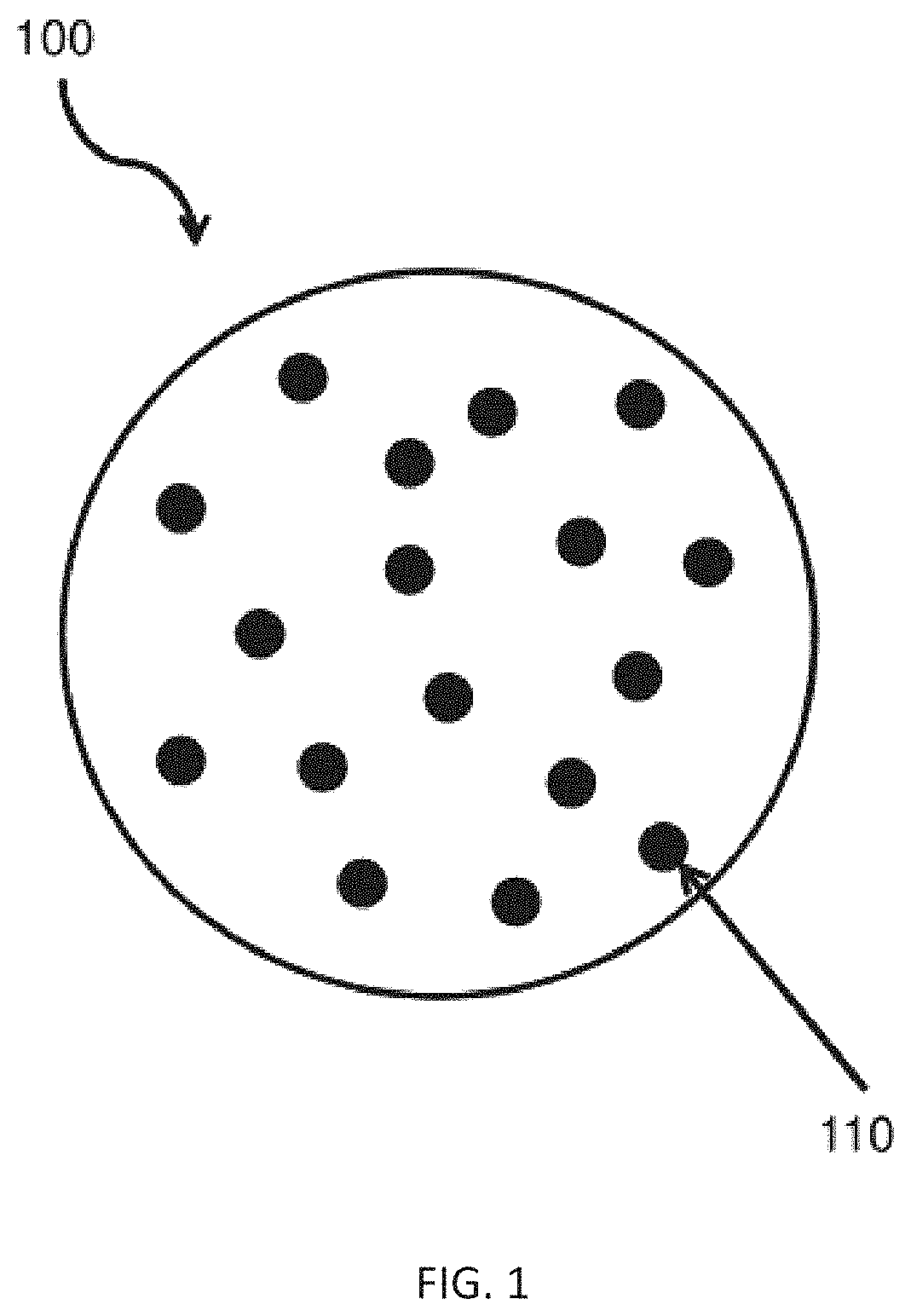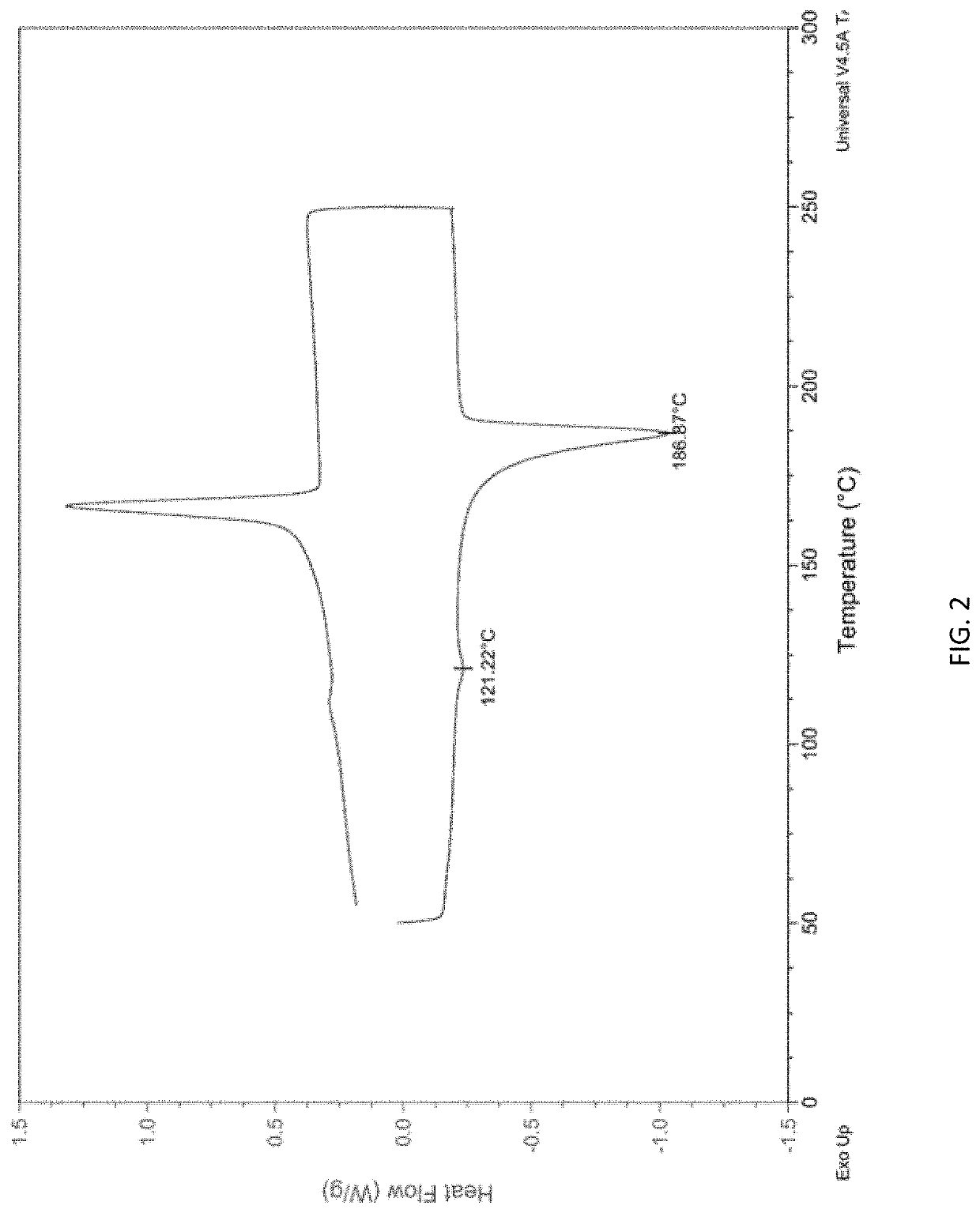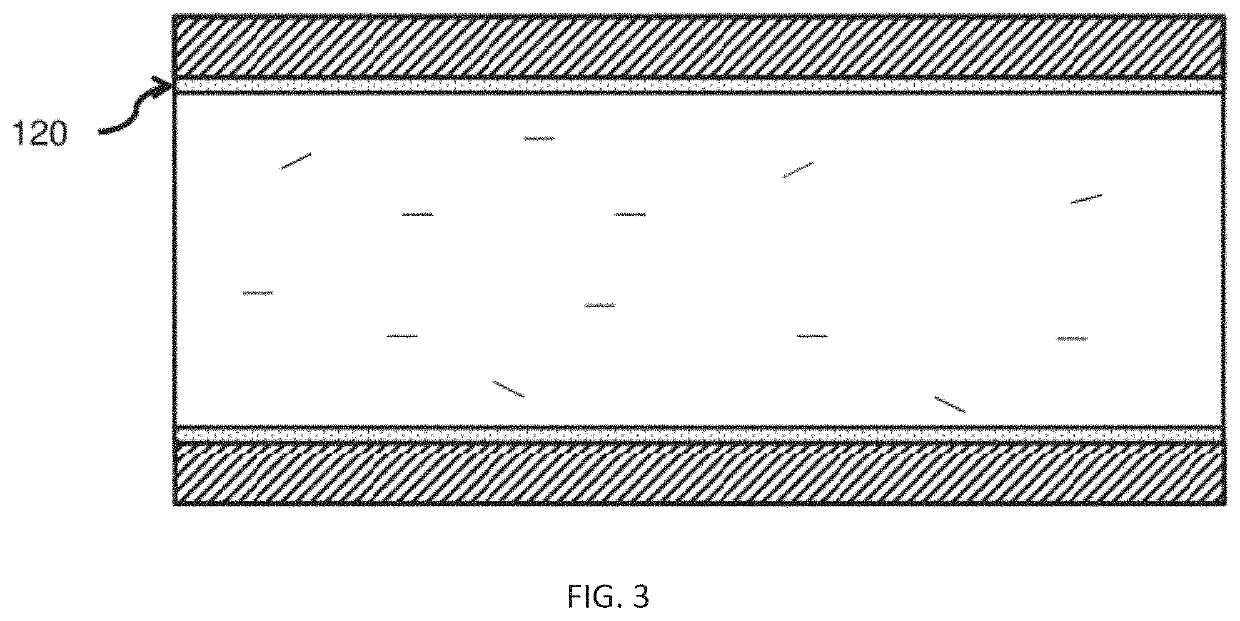Fluorine-containing ethylene-vinyl alcohol copolymer resin composition as well as mixture and blend thereof
a technology of ethylenevinyl alcohol and resin composition, which is applied in the direction of synthetic resin layered products, domestic packaging, packaging, etc., can solve the problems of adversely affecting the appearance and mechanical properties of the film formed therefrom, and achieve the effects of reducing screw sticking problems, reducing the adhesion of evoh to the inside, and reducing the appearance of gel or gelled substan
- Summary
- Abstract
- Description
- Claims
- Application Information
AI Technical Summary
Benefits of technology
Problems solved by technology
Method used
Image
Examples
example 1
[0042]Four fluoropolymers (Example Fluoropolymers A-D) were prepared according to aspects of the disclosure. Example Fluoropolymers A-D were subsequently used for producing fluorine-containing ethylene vinyl alcohol copolymer (hereafter “EVOH”) resin composition according to the instant disclosure. Although Example Fluoropolymers A-D were prepared according to the specific process disclosed below, other types of fluoropolymers may be used for addition with the EVOH.
[0043]Example Fluoropolymer A
[0044]Example Fluoropolymer A was produced using an autoclave as batch reactor. The autoclave had an internal volume of about 20 liters and was equipped with an electromagnetic induction stirrer. The autoclave was sufficiently scavenged with nitrogen gas (N2) and was subsequently filled with reduced pressure nitrogen gas five times.
[0045]While applying a reduced pressure within the autoclave, 6,960 grams (g) of deoxygenated pure water, 3,204 g of 1,1,2-trichloro-1,2,2-trifluoroethane, and 3.5 ...
example 2
[0058]A non-limiting method for preparing fluorine-containing EVOH pellets formed from fluorine-containing EVOH resin composition is provided below. 16 non-limiting, exemplary EVOH resin composition containing fluoro particles (Example EVOH 1-16) and 4 comparative EVOH resin composition (Comparative EVOH 1-4) were prepared according to methods similar to the method disclosed below. However, the specific methods for producing EVOH 1-16 and Comparative EVOH 1-4 typically varied from the method disclosed below in one or more ways.
[0059]An ethylene-vinyl acetate copolymer (hereafter “EVAC”) with an ethylene content of 29%, by mole, underwent saponification by 99.5% to produce EVOH polymers. Subsequently, the EVOH was dissolved into solution comprising methanol and water in a ratio of 70:30. After dissolving the EVOH into the solution of methanol and water, the solution had a 41 wt. % solid content of EVOH and was maintained at a temperature of 60° C.
[0060]The solution of methanol, water...
example 3
[0062]Example EVOH 1-16 were each formed into a film according to the method described below. Films were produced by feeding Example EVOH 1-16 and Comparative EVOH 1-4 into a single layer T-die cast film extruder (Optical Control System MEV4). The films formed from Example EVOH 1-16 and Comparative EVOH 1-4 each had a thickness of 20 μm. The temperature of the extruder was set to 220° C., while the temperature of the cast (T-die) was set to 230° C. The rotational frequency of the screw was 7 rotations / minutes (rpm).
PUM
| Property | Measurement | Unit |
|---|---|---|
| melting point temperature | aaaaa | aaaaa |
| melting point temperature | aaaaa | aaaaa |
| particle size | aaaaa | aaaaa |
Abstract
Description
Claims
Application Information
 Login to View More
Login to View More - R&D
- Intellectual Property
- Life Sciences
- Materials
- Tech Scout
- Unparalleled Data Quality
- Higher Quality Content
- 60% Fewer Hallucinations
Browse by: Latest US Patents, China's latest patents, Technical Efficacy Thesaurus, Application Domain, Technology Topic, Popular Technical Reports.
© 2025 PatSnap. All rights reserved.Legal|Privacy policy|Modern Slavery Act Transparency Statement|Sitemap|About US| Contact US: help@patsnap.com



